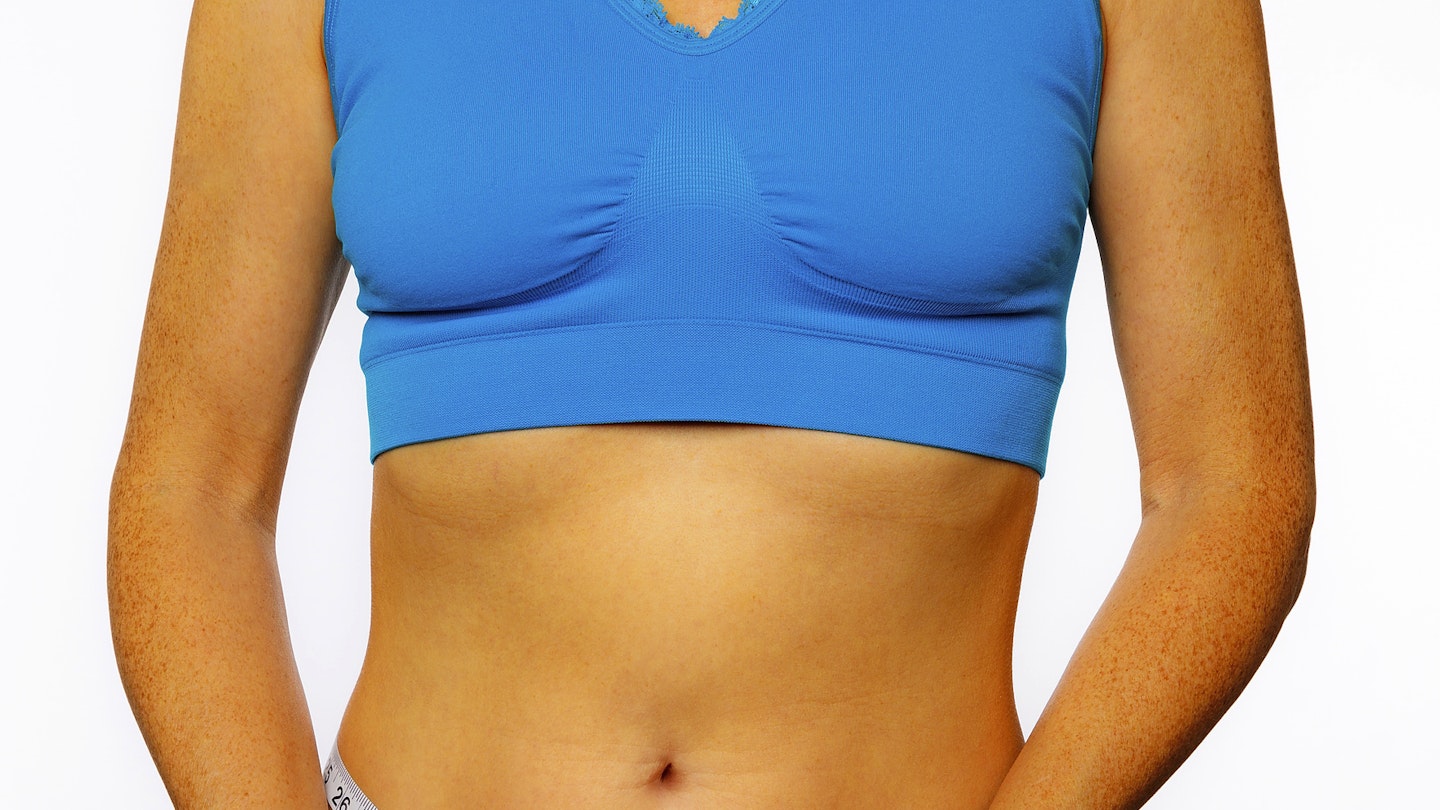As we get older, we tend to store more fat around our middles. Try these eight scientifically backed ways to blast it away
We all know those extra pounds around our middle aren’t good for us.
Additional weight around our tummy is linked to an array of serious health conditions including heart disease, type 2 diabetes, stroke and even certain types of cancer.
Yet shifting those pounds off your belly can be very difficult.
In fact, experts believe that because of how the fat cells in this part of our body behave, our stomach is one of the hardest places to shed fat from.
So what can we do to get our tummies trimmer?
Get HITT fit
According to studies, aerobic exercise is one of the best ways to lose belly fat. But research also suggests that an anaerobic work-out such as HITT — high intensity interval training — is also an excellent strategy to burn overall body fat, including belly fat, and takes less time.
Personal trainer Sarah Campus of LDN Mums Fitness, says: ‘HIIT work-outs are great for utilising the body’s fat stores, including tummy fat. This type of training generally includes doing short bursts of extremely intense exercise, which challenge the heart and force the body to use more energy, both during the work-out and afterwards.’
Increase protein
Studies indicate that eating more quality protein plays an important role in regulating our abdominal fat. In fact, research suggests that those with a higher protein diet are likely to have less belly fat than those who don’t.
Nutritionist Kim Pearson says: ‘Try to incorporate more protein-rich foods such as eggs, salmon or nuts into every meal. Protein fills us up and helps prevent the desire to reach for unhealthy snacks between meals.’
Increase soluble fibre
Could eating more apples, oats and carrots hold the secret to getting a trim tum?
Kim says: ‘Increasing intake of soluble fibre can help to regulate blood-sugar levels, stopping us from constantly snacking.’
Foods rich in soluble fibre pass more slowly through our digestive system, helping to keep us feeling fuller for longer.
Reduce stress
Kim says: ‘Even if just for 10 minutes, try using stress-reduction techniques, like deep, slow breathing, meditation or exercise daily. This is because when too much of our stress hormone, cortisol, is produced it disrupts other hormones that influence our weight and promotes fat storage.
‘Compared with subcutaneous fat — the fat stored just beneath our skin — abdominal fat cells have four times more cortisol receptors, hence the stored fat is directed to our middle.’
Sleep more
Research suggests that not getting enough sleep and getting poor quality sleep may play a role in increasing our abdominal fat.
This is because sleep deprivation may impact our body’s ability to regulate normal feelings of hunger. Feeling sleepy also makes us more likely to turn to sugary and ‘rewarding’ foods to perk our energy levels up.
Minimise sugar
It’s no surprise that a diet high in sugar increases our belly fat.
Kim says: ‘Minimising intake of sugar and starchy carbohydrates is important. If not used immediately for energy, excess sugar will be carried away and stored for later use. One of the body’s storage houses is fat, and one of the obvious places this fat is stored is often our belly.’
Drink less alcohol
Research shows that drinking large amounts of alcohol is linked with an increased risk of abdominal obesity — it’s called a ‘beer belly’ for a reason.
As with sugar, alcohol can stimulate the release of cortisol which promotes fat storage around the middle. Don’t consume more than 14 units a week. However, if you’re serious about reducing your waist size, consider cutting right back on alcohol or even giving up completely.
Find the fun
Do you enjoy exercising? It might make all the difference to your tummy. In fact, research suggests, the more fun we have exercising the less likely we are to treat ourselves with a snack afterwards.
Sarah says: ‘One of the most important pieces of advice about losing weight from your belly is to find an activity that you really enjoy. That way you’re more likely to stick to it, so that it becomes a habit.
‘Any activity that increases your heart rate and that you do regularly will make a difference.’
Edited by Stephanie May
For more information, visit kim-pearson.com and ldnmumsfitness.com
